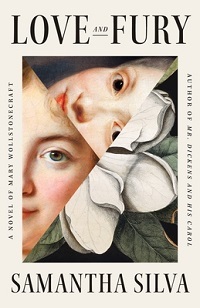date newest »
newest »
 newest »
newest »
message 1:
by
Gary
(new)
Jun 01, 2021 07:27AM
 Is there any reference to her relationship with the painter Fuseli? His painting, "The Nightmare" is believed to have inspired at least one important scene in Mary Shelley's "Frankenstein."
Is there any reference to her relationship with the painter Fuseli? His painting, "The Nightmare" is believed to have inspired at least one important scene in Mary Shelley's "Frankenstein."
reply
|
flag
 Yes, their turbulent relationship is shown in the book. I hadn't realized that about the painting, which is pretty creepy!
Yes, their turbulent relationship is shown in the book. I hadn't realized that about the painting, which is pretty creepy!
 Sarah wrote: "Yes, their turbulent relationship is shown in the book. I hadn't realized that about the painting, which is pretty creepy!"
Sarah wrote: "Yes, their turbulent relationship is shown in the book. I hadn't realized that about the painting, which is pretty creepy!"The painting is definitely creepy, and Fuseli painted more than one version. Mary Shelley is believed to have referred to the painting in Elizabeth Frankenstein's death scene.
"She was there, lifeless and inanimate, thrown across the bed, her head hanging down, and her pale and distorted features half covered by her hair."
– Mary Shelley
Frankenstein, Chapter 23.
Back in the 1980's, Fuseli's "Nightmare" was featured in two films about the Shelleys, Claire Claremont(Mary's half-sister), Byron, Dr. Polidori and their cold, wild summer in Switzerland that inspired Frankenstein: "Haunted Summer"--based on Anne Edwards novel--and "Gothic." Around that time, there was a third film on the same subject, 'Rowing with the Wind," but I don't recall any specific reference to Fuseli's painting in that one.




